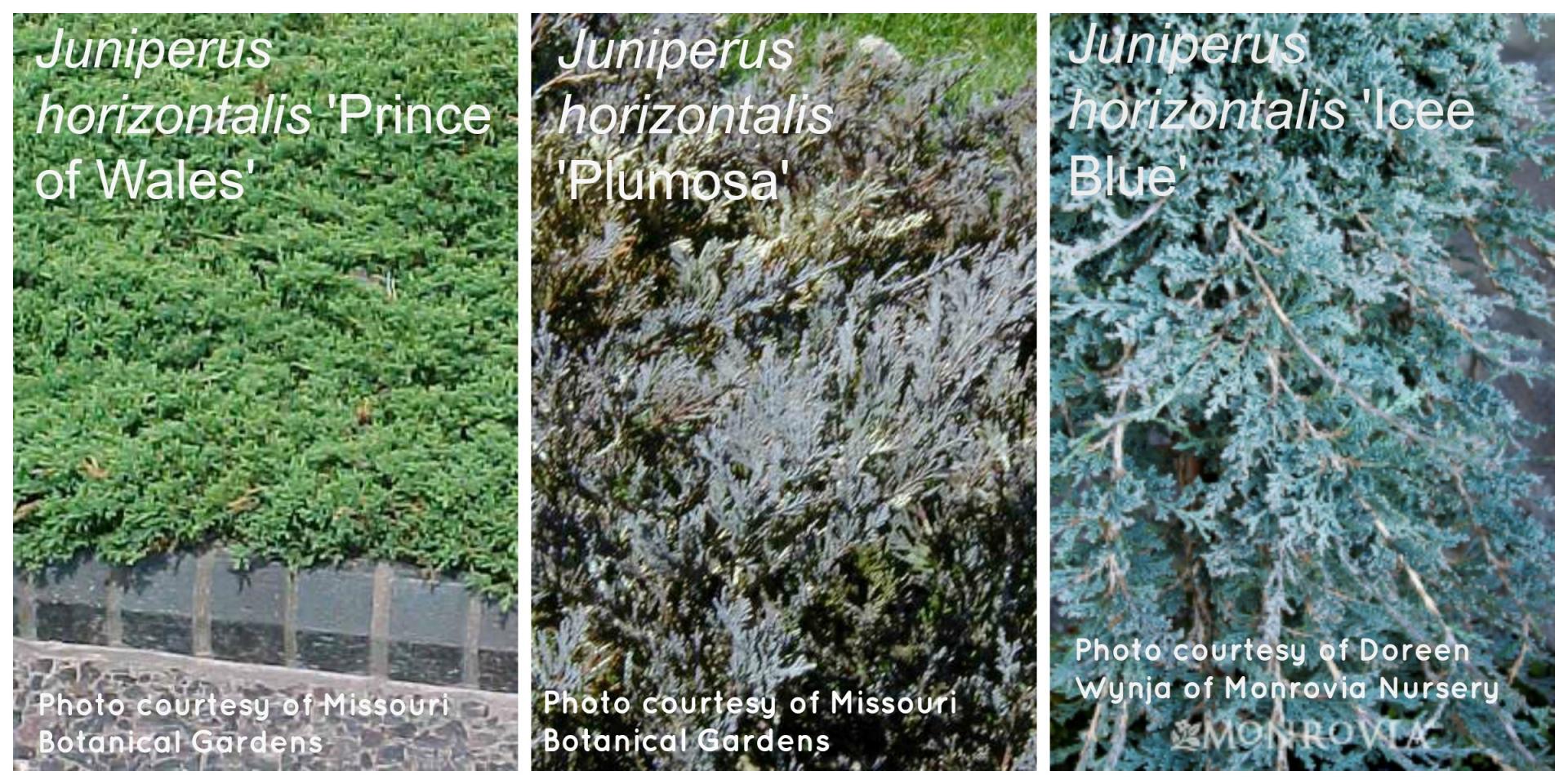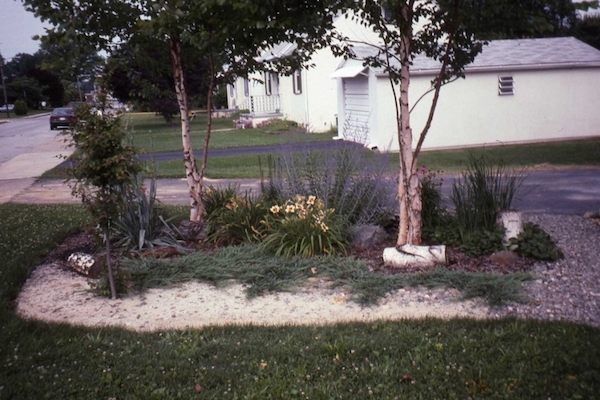January can be very cold and dreary outside. It is always a good idea for a landscape to have interesting design characteristics for any season of the year so that when you look outside to an otherwise brown and white landscape, there is still some color. A good plant for green color that lasts throughout the whole year and gives you winter interest would be creeping juniper.
Creeping Juniper, Juniperus horizontalis, is a low, spreading shrub often used in medians of the roadway. The height of this shrub would be 1-2 feet and it will spread into a large mat. The leaves are scale-like leaves that are commonly found on all junipers. The foliage of the creeping juniper plant typically turns a purplish or plum color during the winter, according to Michael Dirr in the Manual of Woody Landscape Plants. There are small, fleshy cones on this shrub that resemble berries, however they are often not seen on the cultivars.
 There are a lot of good cultivar choices for the creeping juniper. For brilliant, silver blue foliage, choose ‘Icee Blue’. ‘Prince of Wales’ is a bright green cultivar that has a purple tinge during the winter. There are many varieties that turn varying degrees of purple through the winter, ‘Plumosa Compacta’ is a dense, compact variety that grows only 18 inches tall and is nearly purple in the winter months. There are also a few lime green varieties, such as ‘Lime Glow’ that is a chartreuse color until the winter months when the foliage turns a burnt orange color. Look around at the nursery to see what new varieties you can find to fit your color and size needs.
There are a lot of good cultivar choices for the creeping juniper. For brilliant, silver blue foliage, choose ‘Icee Blue’. ‘Prince of Wales’ is a bright green cultivar that has a purple tinge during the winter. There are many varieties that turn varying degrees of purple through the winter, ‘Plumosa Compacta’ is a dense, compact variety that grows only 18 inches tall and is nearly purple in the winter months. There are also a few lime green varieties, such as ‘Lime Glow’ that is a chartreuse color until the winter months when the foliage turns a burnt orange color. Look around at the nursery to see what new varieties you can find to fit your color and size needs.
Creeping Juniper is often used on medians of roads and in plantings along the roadway. It makes a great plant for these locations because it is short for vehicles to be able to see over it and it fills in a large area and stays green year round. It is also a great choice for near roads because it is tolerant of many growing conditions. Once it is established, creeping juniper is tolerant of hot, dry sites as well as clay soils if they are well drained. As with most other landscape ornamentals, the first year the plant needs moist soils, not soggy and not too dry to become established. The only thing that this plant cannot withstand is shade. It is used as a groundcover or massing within landscapes.
Creeping juniper is a great choice for acreages as many wildlife species use it as food and small wildlife species and insects use it as a cover. Deer, many birds, and other small animals such as voles feed on the berries and twigs of creeping juniper, according to the National Forest Service. The National Forest also states that Cheyenne Tribes would burn the Juniper leaves to encourage delivery for women in labor. A tea was also made to treat coughs and sore throats.
Creeping Juniper is a great plant choice for an acreage, a landscape in town, and a median to give the area more color. This plant will tolerate most any growing condition, other than shade, so it will grow most anywhere. There are many varieties to choose from, so it would be easy to find one that is the right color and size for your needs. The next time you look for a new small shrub or groundcover, look at planting creeping juniper to give you color all year long.

